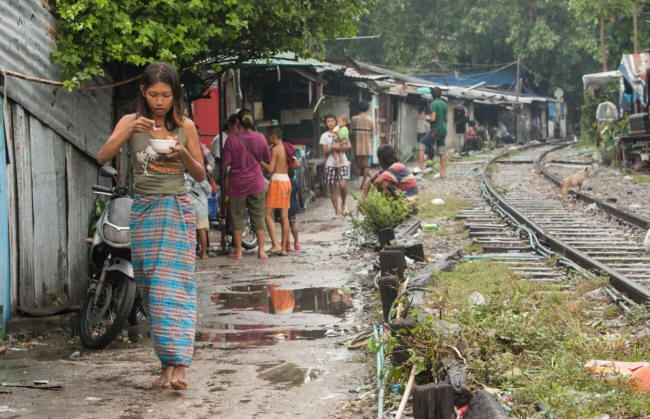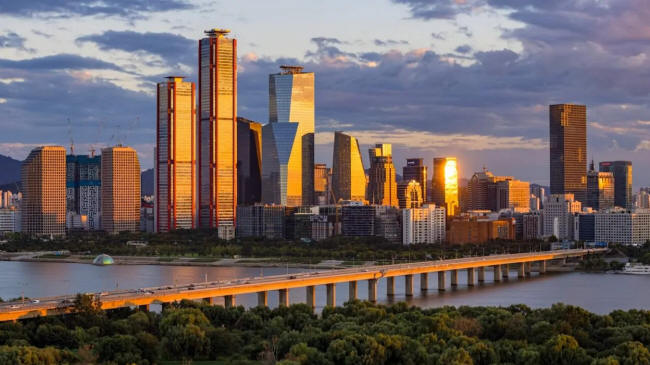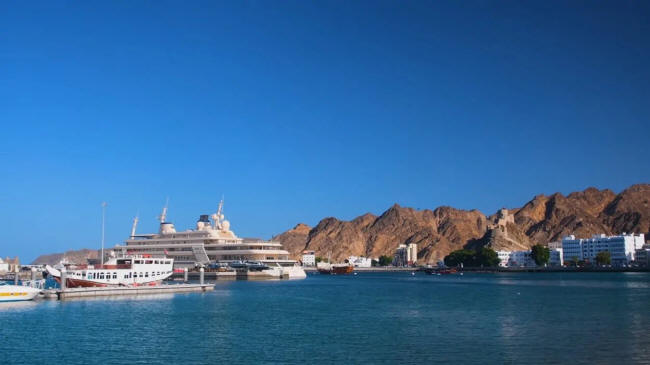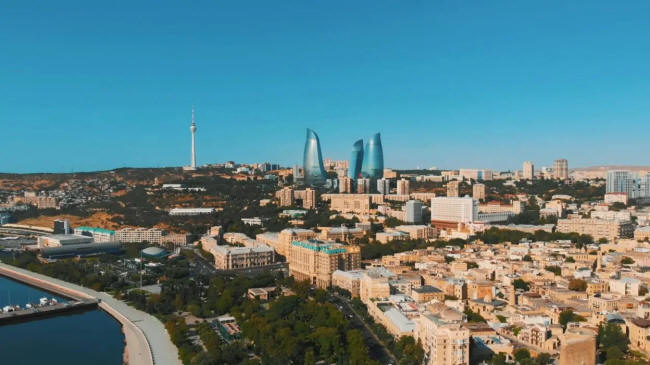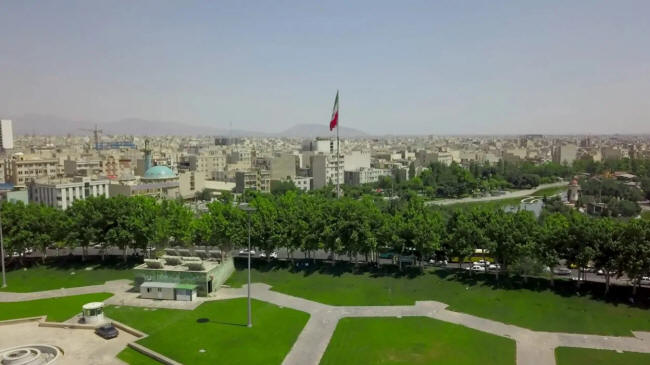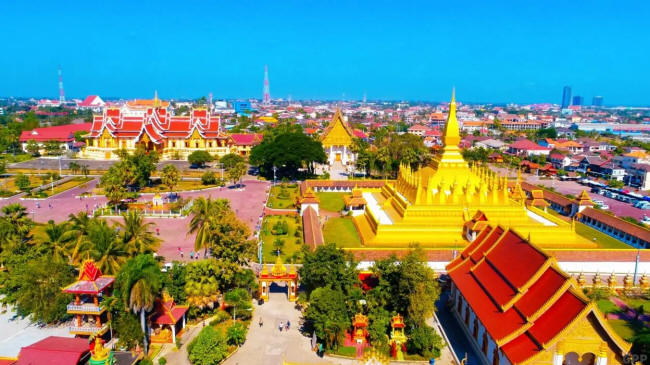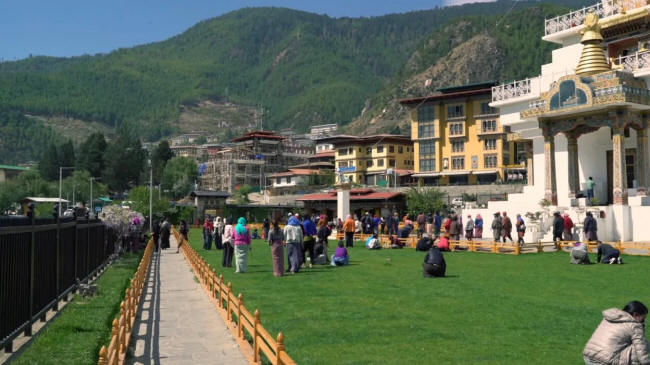|
by Michael Rivera
From the bustling streets of Singapore to the tranquil mountains of Nepal, Asia's economic landscape is as varied as its topography.
In this article, I'll take you on a journey through the richest and poorest countries in Asia as of 2023, providing insights from my travels and experiences.
Home to over 4.5 billion people, is a continent of contrasts.
With countries like China and India boasting populations of about 2.8 billion combined, it's no surprise that Asia is responsible for 30% of the world's income, 40% of production, and over a third of global trade. Over the past 50 years, many Asian nations have made significant economic strides, transforming their societies and economies.
Interestingly, while Asia showcases such economic contrasts, there are cities worldwide that also exhibit stark differences in wealth.
To get into this, one can explore the richest and poorest cities in the world.
Richest Countries in Asia
Asia boasts some of the world's largest economies, including powerhouses like,
Additionally, smaller nations with vast natural resource reserves, primarily oil and gas, have achieved significant wealth.
According to the World Bank's annual reports, many Asian nations have made significant economic strides, transforming their societies and economies.
For those curious about how living costs compare on a global scale, our article on the cheapest countries to live in offers a comprehensive overview
Top 20 Richest Asian Countries by GDP per Capita (PPP) in 2023:
It's worth noting that this ranking only includes independent states with open economies.
Territories like Macau and Hong Kong, as well as countries like North Korea, are excluded from this list...
1. Singapore: Asia's Jewel
Singapore, a small city-state, has transformed itself from a fishing village to one of the world's most prosperous nations.
Its strategic location, pro-business policies, and focus on education and innovation have propelled it to the top of Asia's richest countries.
According to a case study by the Singaporean government's Economic Development Board, the nation's emphasis on research and development has also made Singapore a hotspot for tech startups and multinational corporations.
For those planning to explore the richness of Asian culture, Singapore stands out as a prime destination, offering a blend of modernity and tradition.
Discover the top things to do in Singapore in 2023 and immerse yourself in the vibrant tapestry of the Lion City.
A Hub for Business and Innovation
Singapore's port is one of the busiest globally, and its financial sector is a hub for international banking and trade.
The government's emphasis on research and development has also made Singapore a hotspot for tech startups and multinational corporations.
2. Qatar: The Power of Natural Resources
Qatar, a tiny nation in the Middle East, has leveraged its vast reserves of oil and gas to achieve remarkable economic growth.
With the highest GDP per capita in Asia, Qatar's wealth is evident in its modern infrastructure, world-class facilities, and high standard of living.
Investing in the Future
While oil and gas have been the primary drivers of Qatar's economy, the nation is investing heavily in diversifying its economy. From sports to education to tourism, Qatar is laying the groundwork for a sustainable future.
3. United Arab Emirates: Oasis of Prosperity
The United Arab Emirates, often referred to as the UAE, is a federation of seven emirates on the eastern side of the Arabian peninsula. It's a testament to what vision, planning, and the judicious use of resources can achieve.
From Desert to Destination
The UAE, once a quiet backwater, has transformed into a global hub for business, tourism, and luxury. Its cities, especially Dubai and Abu Dhabi, are symbols of modernity, with towering skyscrapers, sprawling malls, and cultural landmarks.
Diversification is Key
While the UAE's wealth originated from oil, they've diversified their economy into sectors like real estate, aviation, and entertainment.
The nation's leadership understands the importance of looking beyond oil, ensuring a prosperous future for generations to come.
4. Brunei: The Silent Sultanate
Brunei, located on the island of Borneo, is one of the world's smallest countries, but its wealth is evident. Ruled by the same royal family for over six centuries, Brunei's wealth comes from its vast reserves of oil and gas.
A Kingdom of Quiet Luxury
Unlike its flashier counterparts, Brunei opts for a more subdued display of its wealth.
The country focuses on providing a high standard of living for its citizens, with free healthcare, education, and no taxes.
Conserving for Tomorrow
Brunei is also known for its efforts in conservation.
The nation has set aside vast tracts of its rainforests as protected areas, ensuring that its natural beauty is preserved for future generations.
5. Taiwan: The Asian Tiger
Taiwan, an island nation off the southeastern coast of China, is a testament to the power of innovation and entrepreneurship. Despite its limited natural resources, Taiwan has carved a niche for itself as a global leader in technology and manufacturing.
Tech Titan
From semiconductors to electronics, Taiwan is at the forefront of the tech industry. Companies like TSMC and ASUS have put Taiwan on the global map, showcasing its prowess in innovation and production.
Balancing Tradition and Modernity
While Taiwan is a beacon of modernity, it also holds onto its rich cultural heritage. From its bustling night markets to its traditional temples, Taiwan offers a blend of the old and the new.
Taiwan, an island nation off the southeastern coast of China, is a testament to the power of innovation and entrepreneurship. Despite its limited natural resources, Taiwan has carved a niche for itself as a global leader in technology and manufacturing.
Tech Titan
From semiconductors to electronics, Taiwan is at the forefront of the tech industry. Companies like TSMC and ASUS have put Taiwan on the global map, showcasing its prowess in innovation and production.
Balancing Tradition and Modernity
While Taiwan is a beacon of modernity, it also holds onto its rich cultural heritage. From its bustling night markets to its traditional temples, Taiwan offers a blend of the old and the new.
6. Bahrain: The Pearl of the Gulf
Bahrain, an archipelago in the Persian Gulf, has a history that dates back thousands of years. Known historically for its pearl fisheries, Bahrain has successfully transitioned into a modern economy centered around banking, finance, and tourism.
Financial Hub
Bahrain is often referred to as the financial hub of the Middle East. Its liberal economic policies and strategic location have made it a magnet for businesses and investors from around the world.
Embracing the Future
Bahrain is investing heavily in education, technology, and infrastructure. The nation is keen on fostering innovation and entrepreneurship, ensuring it remains competitive in the global landscape.
7. Saudi Arabia: The Desert Giant
Saudi Arabia, the largest country in the Middle East, is synonymous with oil. Home to the world's second-largest proven oil reserves, the Kingdom has been a major player in the global energy market.
According to an article by OPEC, while oil has been the backbone of Saudi Arabia's economy, the nation is embarking on an ambitious plan, Vision 2030, to diversify its economy.
Oil and Beyond
While oil has been the backbone of Saudi Arabia's economy, the nation is embarking on an ambitious plan, Vision 2030, to diversify its economy.
From tourism to entertainment, Saudi Arabia is opening up new avenues for growth.
Cultural Renaissance
Saudi Arabia is also experiencing a cultural renaissance. With new cinemas, concerts, and cultural festivals, the Kingdom is slowly but surely opening up to the world.
8. Israel: The Start-Up Nation
Israel, nestled on the eastern shore of the Mediterranean Sea, is a land of historical significance and modern innovation. Known as the birthplace of major world religions, today's Israel is a hub for technological advancements and entrepreneurial spirit.
Silicon Wadi and Beyond
Israel, often referred to as the "Start-Up Nation," has an ecosystem that fosters innovation and entrepreneurship. With more start-ups per capita than any other country, Israel's tech scene is vibrant and dynamic. From cybersecurity to agritech, Israeli innovations are making waves globally.
Balancing Tradition and Progress
While Israel is a beacon of modernity, it also holds onto its rich cultural and religious heritage. The juxtaposition of ancient landmarks with state-of-the-art tech hubs makes Israel a unique and fascinating destination.
9. South Korea: The Land of Morning Calm
South Korea, located on the Korean Peninsula, is a blend of ancient traditions and cutting-edge innovations.
From the serene temples and palaces of Seoul to the bustling tech industries, South Korea is a testament to harmonizing the old with the new.
Technological Powerhouse
South Korea is home to some of the world's leading tech giants, including Samsung, LG, and Hyundai.
The nation's emphasis on education and innovation has positioned it as a global leader in various sectors, from electronics to automobile manufacturing.
Cultural Richness
K-Pop, K-Dramas, and Korean cuisine have taken the world by storm, showcasing South Korea's cultural richness and global appeal.
Traditional festivals, dance, and art forms coexist with contemporary entertainment, making South Korea a cultural hotspot.
10. Kuwait: The Desert Dynamo
Kuwait, situated at the tip of the Persian Gulf, is a small nation with vast economic potential. Known for its oil reserves, Kuwait has used its wealth to invest in infrastructure, education, and healthcare, ensuring a high standard of living for its citizens.
Oil: The Black Gold
Kuwait's economy has been historically driven by its vast oil reserves. The nation is one of the world's top oil exporters, and the revenues have played a pivotal role in shaping its modern infrastructure and skyline.
Embracing Modernity
Kuwait City, the nation's capital, is a blend of modern skyscrapers and traditional architecture. The Kuwait Towers, an iconic landmark, symbolize the nation's progress and aspirations.
11. Malaysia: The Tropical Paradise
Malaysia, a Southeast Asian nation, is known for its diverse culture, stunning landscapes, and booming economy. Its capital, Kuala Lumpur, is a testament to its rapid modernization and growth.
According to Social Science Research Network Malaysia is a rising Islamic tourist destination.
A Melting Pot of Cultures
From the bustling streets of Penang to the serene beaches of Langkawi, Malaysia offers a blend of Malay, Chinese, Indian, and indigenous cultures and traditions.
12. Oman: The Arabian Gem
Oman, located on the southeastern coast of the Arabian Peninsula, is known for its rich history, stunning landscapes, and modern infrastructure.
Trade and Tradition
Muscat, its capital, is a blend of ancient and modern, with historic forts and modern shopping malls. Oman's strategic location has made it a significant trading hub for centuries.
13. Kazakhstan: The Heart of Eurasia
Kazakhstan, the world's largest landlocked country, boasts vast steppes, rugged mountains, and a growing economy. Its rich reserves of oil, gas, and minerals have propelled its economic growth.
Bridging East and West
Astana, its capital, is a symbol of Kazakhstan's aspirations, with futuristic architecture and a vision to become a central hub between Europe and Asia.
14. Thailand: The Land of Smiles
Thailand, known for its stunning beaches, rich culture, and bustling cities, is a major tourist destination in Asia. Its economy benefits from tourism, agriculture, and manufacturing.
According to a case study of Stockholm Environmental Institute, Thailand is a rising star in the Bioeconomy.
A Blend of Tradition and Modernity
From the ancient temples of Chiang Mai to the modern skyscrapers of Bangkok, Thailand offers a unique blend of the old and the new.
15. Russia: The Transcontinental Titan
While a significant part of Russia lies in Europe, its vast expanse in Asia cannot be ignored. Rich in natural resources, its Siberian region is a testament to its economic potential.
From Ural to the Pacific
Russia's Asian part is known for its vast landscapes, from the Ural Mountains to the Pacific coast. Cities like Vladivostok showcase Russia's Asian influence and economic potential.
16. Azerbaijan: The Land of Fire
Azerbaijan, located at the crossroads of Europe and Asia, boasts a rich history, stunning landscapes, and vast oil reserves. Its capital, Baku, is a blend of ancient and modern.
A Hub of Energy and Culture
Azerbaijan's economy benefits from its oil and gas reserves. At the same time, its rich cultural heritage, from the ancient rock carvings of Gobustan to the modern Flame Towers of Baku, showcases its diverse identity.
17. Iran: The Persian Powerhouse
Iran, with its rich history and vast landscapes, is known for its oil reserves, cultural heritage, and strategic location. Its economy is diverse, benefiting from oil, agriculture, and manufacturing.
A Tapestry of Traditions
From the ancient ruins of Persepolis to the bustling bazaars of Tehran, Iran offers a unique blend of the ancient and the modern.
18. Indonesia: The Archipelago of Diversity
Indonesia, the world's largest archipelago, boasts diverse cultures, stunning landscapes, and a growing economy. Its strategic location has made it a significant trading hub for centuries.
Islands of Opportunity
From the rice terraces of Bali to the bustling streets of Jakarta, Indonesia's economy benefits from tourism, agriculture, and manufacturing.
19. Turkmenistan: The Desert Oasis
Turkmenistan, known for its vast deserts and ancient cities, boasts vast reserves of natural gas. Its economy benefits from energy exports, agriculture, and trade.
From Ancient Merv to Modern Ashgabat
Turkmenistan's rich history, from the ancient city of Merv to the modern capital of Ashgabat, showcases its diverse identity and economic potential.
20. Philippines: The Pearl of the Orient
The Philippines, an archipelago of over 7,000 islands, is known for its diverse culture, stunning landscapes, and growing economy. Its strategic location has made it a significant trading hub for centuries.
According to case study of Asian Development Bank Philippines are a rising economy of Southeast Asia.
A Melting Pot of Cultures
From the historic streets of Manila to the serene beaches of Palawan, the Philippines offers a blend of indigenous, Spanish, American, and Asian influences.
Poorest Countries in Asia
On the other end of the spectrum, several Asian countries face economic challenges, often due to political instability, lack of resources, or geographical constraints.
According to a report by the Asian Development Bank, these countries, despite their economic challenges, are rich in culture, history, and potential.
Top 20 Poorest Asian Countries by GDP per Capita (PPP) in 2023:
These countries, despite their economic challenges, are rich in culture, history, and potential. With the right investments and policies, they too can achieve economic prosperity.
1. Yemen: A Nation in Crisis
According to OECD Yemen, located at the southern tip of the Arabian Peninsula, has faced years of conflict and instability.
This has severely impacted its economy, making it one of the poorest countries in Asia. According to a case study by the United Nations, despite its challenges, Yemen is home to a resilient population with a rich history and culture.
A Hopeful Future
Despite its challenges, Yemen is home to a resilient population with a rich history and culture. With peace and stability, the nation has the potential to rebuild and prosper.
2. Afghanistan: Overcoming Adversity
Afghanistan, a landlocked country in South Asia, has faced decades of war and political upheaval. This has hindered its economic development and left many of its citizens in poverty.
A Nation of Resilience
Afghanistan's rugged landscapes are a testament to its people's resilience and determination. With the right support and opportunities, Afghanistan can chart a new path towards prosperity.
3. East Timor: The Rising Star
East Timor, or Timor-Leste, is one of the world's youngest nations, gaining its independence in 2002. Located in Southeast Asia, this small nation has faced its share of challenges but is steadily charting a path towards growth and stability.
A Nation Reborn
After years of conflict and struggle for independence, East Timor emerged as a beacon of hope for self-determination. Its rich cultural heritage, influenced by both indigenous traditions and Portuguese colonization, gives it a unique identity.
Investing in the Future
East Timor is focusing on sectors like tourism, agriculture, and fisheries to diversify its economy. With its pristine beaches and biodiverse coral reefs, it's slowly becoming a sought-after destination for eco-tourists.
4. Nepal: The Himalayan Haven
Nestled amidst the mighty Himalayas, Nepal is a land of stunning landscapes and rich traditions. From the bustling streets of Kathmandu to the serene trails of the Annapurna range, Nepal is a blend of the ancient and the modern.
Cultural Mosaic
Home to diverse ethnic groups and religions, Nepal is a tapestry of cultures and traditions. Its festivals, rituals, and temples are a testament to its rich cultural heritage.
Challenges and Opportunities
While tourism, especially trekking and mountaineering, is a significant source of revenue, Nepal faces challenges like infrastructure development and political stability. However, with its resilient spirit, Nepal is poised for growth and development.
5. Tajikistan: The Jewel of Central Asia
Tajikistan, located in Central Asia, is a land of rugged mountains and pristine lakes. While it's one of the lesser-known countries in Asia, its beauty and culture are unmatched.
Silk Road Legacy
Once a crucial part of the ancient Silk Road, Tajikistan has a rich history of trade and cultural exchange. Its bazaars, caravanserais, and fortresses speak of a time when it was at the crossroads of civilizations.
Harnessing Potential
Tajikistan's economy relies heavily on remittances and agriculture. However, there's potential in sectors like mining, hydroelectric power, and tourism. With its untapped natural beauty, Tajikistan could become a top destination for adventure seekers.
6. Myanmar: The Golden Land
Myanmar, formerly known as Burma, is a country in Southeast Asia known for its golden pagodas, ancient cities, and diverse landscapes. From the temples of Bagan to the beaches of Ngapali, Myanmar is a land of contrasts.
A Nation in Transition
After decades of military rule, Myanmar is undergoing political and economic reforms. This transition has opened the doors for foreign investment and tourism, bringing new opportunities and challenges.
Rich in Resources:
Myanmar is rich in natural resources like jade, gems, and timber. With the right policies and sustainable practices, these resources can drive the nation's economic growth while preserving its natural beauty.
7. Cambodia: The Kingdom of Wonder
Cambodia, located in the heart of Southeast Asia, is a country steeped in history and culture.
Known for the magnificent Angkor Wat temple complex, Cambodia has a rich tapestry of ancient traditions and modern aspirations.
Legacy of the Khmers
The ancient Khmer empire, which once ruled much of Southeast Asia, has left an indelible mark on Cambodia. The temples of Angkor are a testament to the architectural and artistic prowess of the Khmer civilization.
Emerging Opportunities
Post the tragic Khmer Rouge era, Cambodia has been on a path of recovery and growth. With a focus on tourism, textiles, and agriculture, the nation is striving to build a sustainable and inclusive economy.
8. Kyrgyzstan: The Land of Celestial Mountains
Kyrgyzstan, a gem in Central Asia, is characterized by its breathtaking landscapes, from vast steppes to snow-capped peaks. This landlocked nation boasts a rich nomadic heritage and a spirit of hospitality.
Nomadic Traditions
The Kyrgyz people have a deep-rooted nomadic culture, with traditions like yurt-living and eagle hunting still prevalent. The annual World Nomad Games showcases this rich heritage, attracting participants and tourists from around the globe.
Harnessing Natural Beauty
With its pristine lakes, alpine meadows, and rugged mountains, Kyrgyzstan has immense potential for eco-tourism and adventure sports. Sustainable tourism initiatives are paving the way for a brighter economic future.
9. Pakistan: The Land of Pure
Pakistan, located at the crossroads of South Asia and the Middle East, is a country of diverse landscapes, from the deserts of Sindh to the towering peaks of the Karakoram range.
Historical Crossroads
Pakistan's history is intertwined with ancient civilizations like the Indus Valley and empires like the Mughals. Its historical sites, such as Mohenjo-Daro and the Badshahi Mosque, reflect its rich past.
Potential Unleashed
Despite challenges, Pakistan's economy is on an upward trajectory. Sectors like textiles, agriculture, and IT are driving growth. The China-Pakistan Economic Corridor (CPEC) is set to further boost trade and infrastructure development.
10. Bangladesh: The Deltaic Delight
Bangladesh, cradled by the Bay of Bengal and the Brahmaputra delta, is a country of rivers, mangroves, and vibrant culture. Known for its textiles and rich literary heritage, Bangladesh is a nation on the move.
Cultural Vibrancy
From the poetic verses of Kazi Nazrul Islam to the melodies of Lalon, Bangladesh has a rich cultural and artistic legacy. The annual Pohela Boishakh celebrations encapsulate the nation's spirit and unity.
Economic Resilience
Despite being one of the most densely populated countries and facing challenges like climate change, Bangladesh has showcased remarkable economic resilience.
The textile industry, remittances, and a burgeoning IT sector are pillars of its growth story.
11. Laos: The Landlocked Gem
Laos, a landlocked nation in Southeast Asia, is known for its mountainous terrain, Mekong River, and rich cultural heritage. Its economy is primarily agrarian, with rice being the major crop.
According to Social Science Open Acces Repository the average poverty level in Lao PDR has declined substantially since the beginning of economic reforms in 1986, sub-national dynamics give rise to a discussion of the trends and issues that determine and sustain provincial poverty and the variegated processes of rural transition
A Blend of Traditions
From the ancient temples of Luang Prabang to the modern streets of Vientiane, Laos offers a unique blend of traditions and modern aspirations.
12. Bhutan: The Last Shangri-La
Bhutan, nestled in the Himalayas, is known for its stunning landscapes, rich culture, and Gross National Happiness index. Its economy benefits from hydroelectric power, agriculture, and tourism.
According to case study of Oxford University Press – The term "Gross National Happiness" or GNH emerged in the 1970s, when journalists asked Bhutan's Fourth King about his country's gross national product.
The young king's reply, that "Gross National Happiness is more important than gross national product," clearly articulated his vision that the happiness and well-being of the country, rather than simply its economic output, should be the focus of the country's development.
A Kingdom of Happiness
From the cliffside Tiger's Nest Monastery to the bustling streets of Thimphu, Bhutan offers a unique blend of ancient traditions and modern development.
13. Maldives: The Tropical Paradise
The Maldives, an archipelago in the Indian Ocean, is known for its stunning coral reefs, luxury resorts, and marine biodiversity. Its economy heavily relies on tourism, fishing, and agriculture.
Islands of Luxury
From the overwater villas of Male to the pristine beaches of its atolls, the Maldives offers a unique blend of luxury and natural beauty.
14. Mongolia: The Land of the Eternal Blue Sky
Mongolia, known for its vast steppes and nomadic traditions, boasts a rich history and diverse landscapes. Its economy benefits from mining, agriculture, and tourism.
According to a case study of the International Monetary Fund Mongolia is trying to create an environment to provide sustainable human development, increase the living standards of citizens, make social services accessible and reduce poverty and unemployment become an important social sector objective of the Government of Mongolia.
A Nomadic Legacy
From the Gobi Desert to the modern streets of Ulaanbaatar, Mongolia offers a unique blend of ancient nomadic traditions and modern development.
15. Sri Lanka: The Teardrop of the Indian Ocean
Sri Lanka, an island nation in the Indian Ocean, is known for its rich cultural heritage, stunning landscapes, and diverse ecosystems. Its economy benefits from tourism, textiles, and agriculture.
A Jewel of Diversity
From the ancient ruins of Anuradhapura to the modern streets of Colombo, Sri Lanka offers a unique blend of ancient traditions and modern aspirations.
16. Uzbekistan: The Heart of the Silk Road
Uzbekistan, located in Central Asia, boasts a rich history, stunning architecture, and diverse landscapes. Its economy benefits from natural gas, gold, and agriculture.
A Tapestry of Cultures
According to UNESCO ancient city of Samarkand, Uzbekistan offers a unique blend of ancient and modern.
17. Vietnam: The Rising Dragon
Vietnam, a Southeast Asian nation, is known for its rich history, stunning landscapes, and booming economy. Its strategic location has made it a significant trading hub for centuries.
A Blend of Traditions
From the bustling streets of Ho Chi Minh City to the serene landscapes of Halong Bay, Vietnam offers a blend of ancient traditions and modern development.
18. Jordan: The Crossroads of Civilizations
Jordan, located in the Middle East, boasts a rich history, stunning landscapes, and diverse cultures. Its economy benefits from tourism, phosphates, and agriculture.
A Land of Contrasts
From the ancient city of Petra to the modern streets of Amman, Jordan offers a unique blend of ancient and modern.
19. Armenia: The First Christian Nation
Armenia, located in the South Caucasus, boasts a rich history, stunning landscapes, and diverse cultures. Its economy benefits from mining, agriculture, and tourism.
A Blend of Ancient and Modern
From the historic temples of Garni to the modern streets of Yerevan, Armenia offers a unique blend of ancient traditions and modern aspirations.
20. Georgia: The Gateway to Europe
Georgia, also located in the South Caucasus, boasts a rich history, stunning landscapes, and diverse cultures. Its economy benefits from tourism, wine production, and agriculture.
According to case study of the International Monetary Fund, they are trying to lower poverty rate significantly.
A Land of Wine and Song
From the ancient wine-producing region of Kakheti to the modern streets of Tbilisi, Georgia offers a unique blend of ancient traditions and modern development.
FAQ
Final Words
Asia, with its vast expanse and diverse cultures, is a continent of contrasts.
Its economic landscape mirrors its geographical and cultural diversity. According to a comprehensive analysis, while some nations bask in the glory of prosperity, others strive for growth amidst challenges.
Yet, the spirit of resilience, innovation, and hope binds them all.
References Used
|


